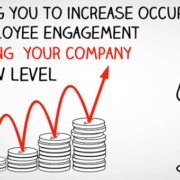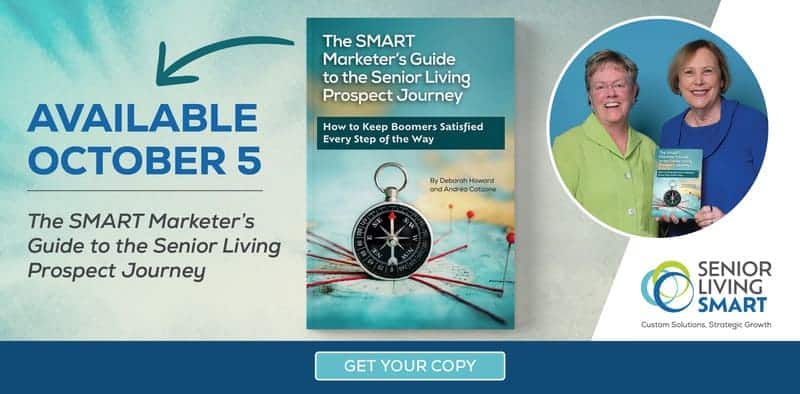Senior Living Sales in the Post-COVID Era: 3 Things We’ve Learned
When it comes to senior living sales, we’re a long way off from the “post-COVID” era. But we’re (thankfully!) turning the corner on COVID-19 (the first wave anyway).
As more and more senior living communities open their doors and return to this “new normal,” now is a good time to pause and consider the things you’ve learned over the last five months. What worked? What didn’t? And what can you do differently from a sales perspective as you move forward?
Here are three things we’ve learned about marketing during a pandemic. This includes insights from our own clients as well.
-
Virtual sales experiences can be effective.
In our industry, the in-person tour has always been the ultimate “get” in the sales process. (Well, the ultimate get before the actual move-in!) But what many of our clients have learned during lockdown is this: virtual sales experiences can deliver move-ins, too.
So, what does this revelation suggest?
Well, maybe we’ve been spending too much time thinking about what the sales folks need to move prospects down the funnel. Instead, we should focus on the prospects’ needs. In other words, maybe the sales reps’ role is figuring out how they can help empower prospects to move themselves through the funnel.
That’s just one thing that’s been bubbling up.
It makes sense when you think about the shifts in how people research and buy today. We’ve all grown accustomed to being in control. For example, we all like being able to read reviews or use AI to improve the buying process (“Hey, Alexa!”). In addition, we can lodge complaints publicly on Twitter and ignore calls from unknown numbers. So much happens from the comfort of our couch with nothing more than a phone. People can now buy a car without having to leave their house or interact with a sales person.
So of course people are going to demand more and more opportunities for virtual sales experiences from senior living communities, like a 3D virtual tour. Or a reassuring live chat (with a real human). Or unvarnished videos of your residents and staff experiencing daily life in your community.
An important note: We don’t think virtual experiences are going to eliminate in-person tours. Buying a residence is still very much a tactile experience, and people want to see, touch, and smell. But perhaps sales people need to put less emphasis on pushing the in-person tour. Instead, they should focus on delivering targeted and effective virtual experiences that people crave. The better these experiences are, the easier it will be for the prospect to organically move themselves into the position of requesting the in-person tour when they’re ready.
TAKEAWAY: Rethink your overall marketing and sales process. The marketing team will definitely need to be part of these conversations since they often spearhead the creation of assets the sales team needs, like videos and live chat on the website.
Perhaps consider creating two “paths.” The first path will be the “live” sales experience. The second path can be a virtual one. What would the process look for each path, from start to finish? How would you nurture leads differently? How would you follow up with them differently? Don’t forget about measuring results! What would be considered successful? Will a longer sales cycle be OK if it produces more conversions?
-
Crisis communication isn’t a one-time exercise for senior living sales teams.
COVID-19 forced everyone to dust off their crisis communication plan (provided they even had one) and put it into action.
How’d yours do? If your answer is “meh,” you’re not alone.
Too often, we simply go through the motions once or twice a year of holding drills and reviewing emergency preparedness plans. But drills and a real life global pandemic are two different things.
Another important point: crisis communications shouldn’t be issued only when a crisis hits. Effective crisis communication is an ongoing task, one that you should mix in with your regular content marketing.
For example, every season brings its own challenges and potential crisis. Perhaps your community is located in an area of the country that experiences severe weather from June to November (think hurricanes). Instead of waiting for something to happen, create and share your crisis communication plan for severe weather NOW.
No, you don’t need to be alarmist. But if your community is in a hurricane zone, perhaps it makes sense to have a section on your website that proactively talks about your community’s approach to bad weather. What happens if there’s a power outage? Flooding? What’s the approach depending on the storm category (the difference between a Cat 1 and Cat 5 storm)? How can families stay in touch? How do you send messages/alerts to families and/or where can they call into?
And this goes without saying, but ALL communities should be working on a crisis communication plan for COVID and flu for the fall of 2020/winter of 2021.
TAKEAWAY: Think about the worst case scenarios that could affect your community. Disease and weather top the list, so you should have content sections on both. Include an overview page. In addition, have FAQs about each particular topic. Other sections to consider: chemical accidents, fire, terrorist events. Yes, we know these are scary topics, but your content can be calming and reassuring.
Promote these sections on social media, to prospects and new residents/families, and to local reporters (who are always looking for go-to experts when disaster hits). Be the resource that residents, families, and prospects crave.
This information will go a long way in demonstrating that your community has put the time and effort into planning. It will also show that you learned from any mistakes/missteps from COVID-19. Because, let’s face it: no one was fully prepared.
-
When it comes to delivering essential messages, lather, rinse, repeat. And repeat, repeat, repeat.
Over the last five months, have you found yourself repeating things to people because they’ve forgotten you told them already? Have you found that you’ve had trouble remembering things?
You’re not alone. This pandemic has worn out everyone mentally. As CNN.com notes, “Experts say it all has to do with how the pandemic is affecting our cognitive health—meaning, our ability to clearly think, learn and remember.”
TAKE AWAY: Before COVID-19, you typically had to repeat marketing messages anywhere from 7-12 times (at least) before it started to sink into people’s heads. When it comes to senior living sales today, plan on doubling that—even for simple messages.
Ideas for pushing out your core messages:
- Update and republish evergreen blogs that promote core messages.
- Increase how often you share certain content, like a blog post, over time. For example, if you publish a new blog tomorrow, do you tweet and post about it a couple times and then forget about it? Make sure you have a promotion plan that continues to pump out your most valuable content. Marketing automation can help with this. Write a tweet once, but schedule the same tweet 10 times over 30 days.
- Keep messages short and punchy—especially on social media. Make it easy to digest and remember.
- Finally, use a variety of media to say the same thing. Some people like to read. Others like to watch video. Still others like to listen.












